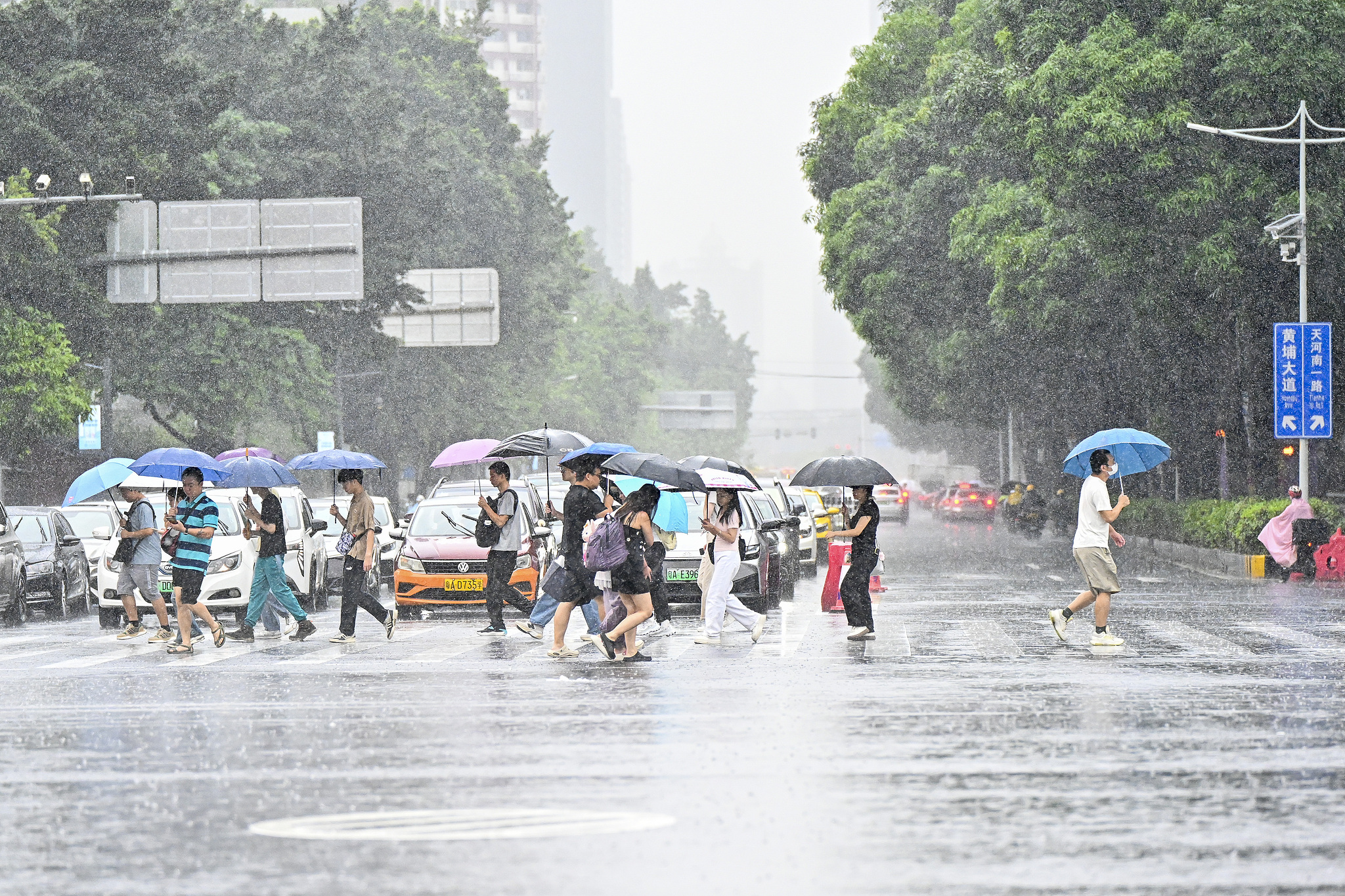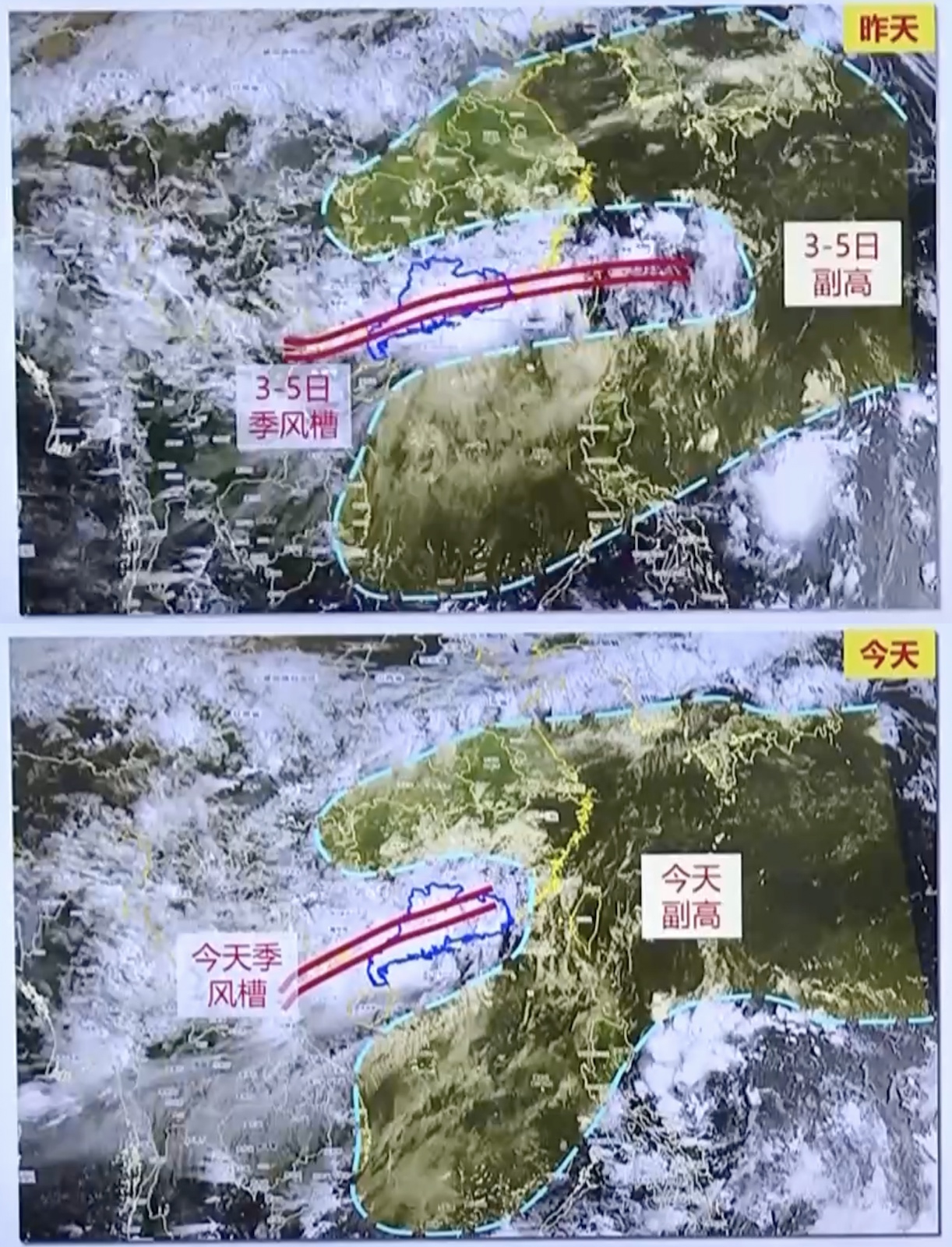Intense torrential rains hit south China's Guangdong Province in early August, triggering mudslides, landslides and urban flooding. So far, over 85,400 residents have been evacuated from affected areas.

Rainstorms hit Guangzhou, Guangdong Province, south China, August 5, 2025. /VCG
The rainfall was extreme and widespread, covering most of Guangdong. Typically, the province sees an average of 260 mm of rainfall throughout August. However, in the last four days, the average provincial rainfall exceeded 161 mm – over 60 percent of the monthly average.
Yang Guojie, chief forecaster at the provincial meteorological service, explained that the rain was driven by two major systems. The first was a monsoon trough, which alone would normally result in a mobile band of precipitation moving gradually northward, and eventually exiting Guangdong. This time, however, the monsoon trough was coupled with a pincer-like subtropical high-pressure system, which lingered over both the northern and southern parts of the province from early Sunday to Tuesday. This led the monsoon trough to extend from Taiwan all the way to Guangxi Zhuang Autonomous Region, resulting in a broad and persistent rainfall belt.

Maps show the monsoon trough and subtropical high-pressure system over south China from August 3 to 5 (top) and August 6, 2025 (bottom). /CMG
By Wednesday, the subtropical high had begun shifting westward. The monsoon trough shortened and moved to the Guangxi-Guangdong border area, causing rainfall in Guangdong to gradually weaken.
These two interacting systems caused the rain to last longer, spread wider and accumulate in greater volume than typical summer storms.

Rescue efforts underway in Baiyun District, Guangzhou, Guangdong Province, south China, August 6, 2025. /VCG
As of 9 a.m. Thursday, rescuers have brought out nine people from debris, with two of them confirmed dead, after a rain-triggered landslide trapped 14 people in Dayuan Village, administered by provincial capital Guangzhou, according to local fire and rescue authorities.
Search efforts are ongoing for those still missing, said the emergency management bureau of Baiyun District, where the village is located.
Baiyun has deployed 607 rescue personnel and mobilized 733 pieces of rescue equipment, including excavators, life detectors and emergency communication support vehicles. A total of 2,200 emergency and epidemic-prevention supplies, such as tents and raincoats, have also been allocated.
Yang added that another round of heavy rainfall may occur in late August, but it is expected to be less intense and less widespread. Still, Guangdong remains in its main flood season, and the overall flood prevention situation remains severe.

Rescue efforts underway in Baiyun District, Guangzhou, Guangdong Province, south China, August 6, 2025. /VCG
The National Development and Reform Commission has allocated 100 million yuan (about $14 million) from the central budget to support emergency recovery efforts.
The funds will be focused on restoring damaged roads, water supply systems, hospitals and other critical infrastructure and public service facilities in affected areas, accelerating a return to normal production and daily life.
(With input from Xinhua)
(Cover: Storms approach Zhuhai, Guangdong Province, south China, August 6, 2025. /VCG)
阅读原文:https://news.cgtn.com/news/2025-08-07/Factors-behind-Guangdong-s-unusually-intense-rainfall-1FDtn9F9wxq/p.html